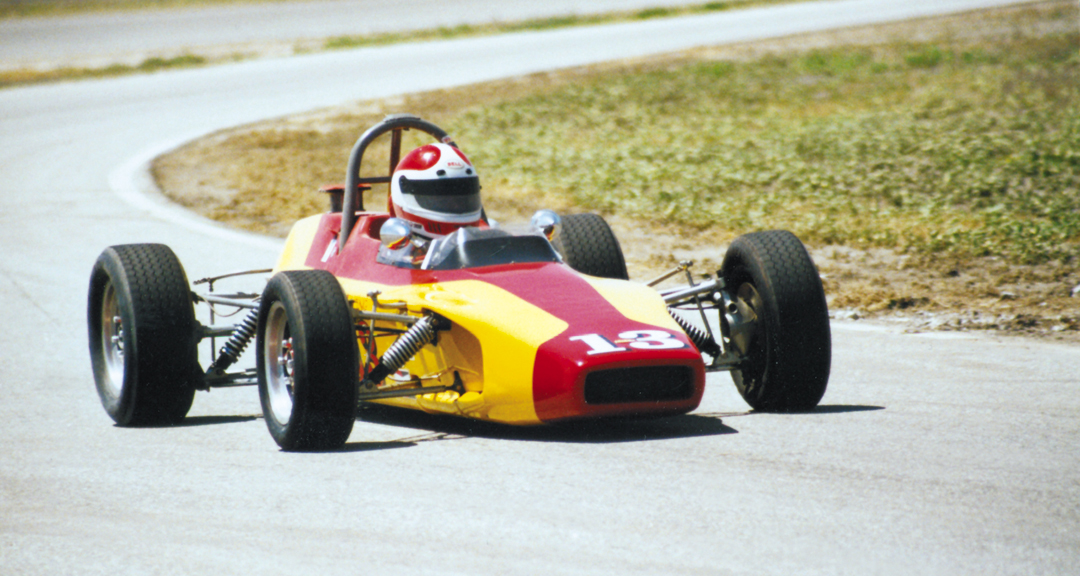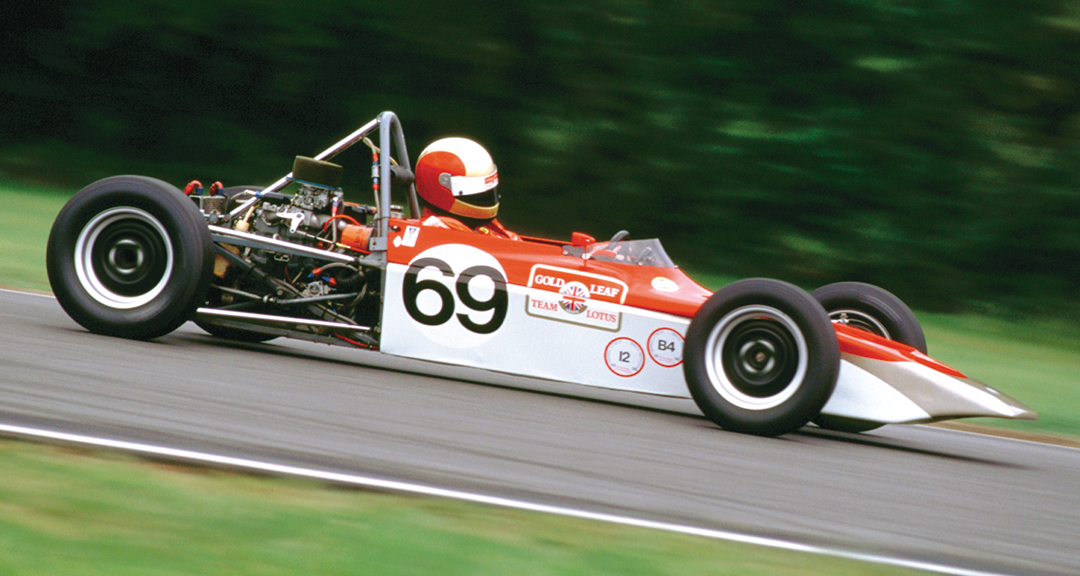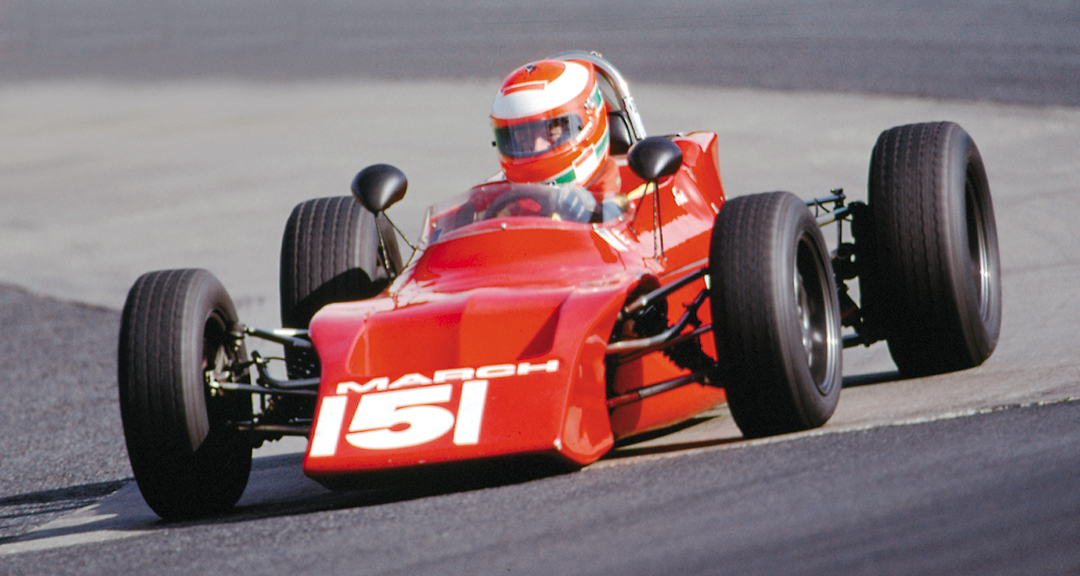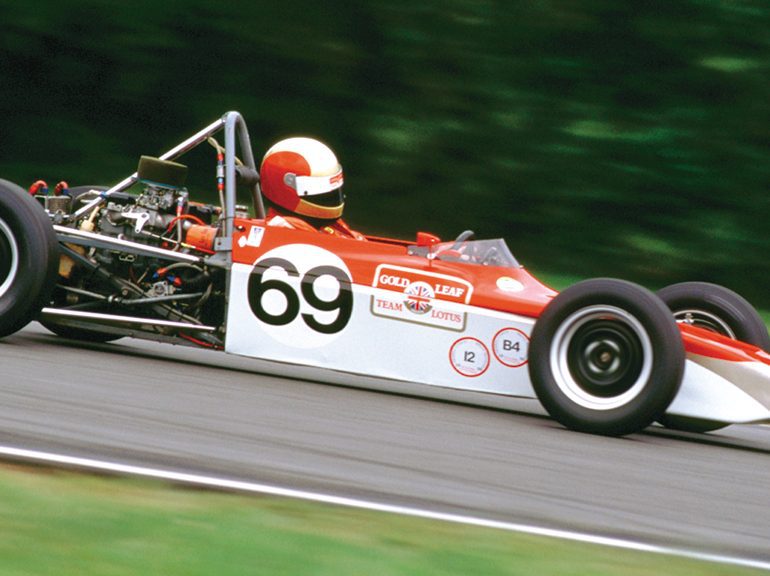Formula Ford was a specification racing series created on the idea that the best drivers would win if they were racing identical cars. The idea for this low budget Formula was created by an Englishman named Geoffrey Clarke who had a driver’s school called Motor Racing Stables based at the Brands Hatch Circuit. Clarke received support from Ford’s competition manager, Henry Taylor, and Ford’s director of public affairs, Walter Hayes. Ford supplied their 1600 cc Cortina GT engine and their backing and name. Lotus Components built a car based on the Lotus 31 Formula 3 car, calling it the Lotus 51 Formula Ford. Ironically, these early cars had a Renault gearbox. They sold for the affordable price of just under £1,000 making racing in this series very affordable since a Formula 3 car of the day cost over £3,000. The Royal Automobile Club, Britain’s governing body, established a set of racing regulations. The first official race was held at Brands Hatch on July 2, 1967. From 1967 to the present, the Formula Ford Series has produced some very exciting racing in many different makes of racing cars as well as great drivers and future champions including Andretti, Fittipaldi, Schenken, Scheckter and Senna. Today, historic Formula Ford is an entry level racing category and, for the purposes of this guide, covers cars from 1967 to 1972. Keep in mind the greatest single factor in determining the value of a Formula Ford is the quality and cost of its preparation.
| Make | Model | Level III | Level II | Level I |
| Alexis | 14 | $8,000 | $12,000 | $17,000 |
| 15 | $8,000 | $12,000 | $17,000 | |
| 18B | $9,000 | $14,000 | $18,000 | |
| 22 | $9,000 | $14,000 | $19,000 | |
| Beach | Mk II | $7,500 | $15,000 | $21,000 |
| Bobsy | $5,000 | $10,000 | $15,000 | |
| Caldwell | D9, D9B | $8,000 | $16,000 | $23,000 |
| Crossle | 16F | $9,000 | $13,000 | $17,000 |
| 20F | $10,000 | $13,000 | $20,000 | |
| Dulon | LD4, 4B, 4C | $5,000 | $10,000 | $15,000 |
| LD9 | $6,000 | $11,000 | $17,000 | |
| Elden | PH6 | $5,000 | $11,000 | $17,000 |
| PH8 | $5,000 | $12,000 | $18,000 | |
| PH10 | $6,000 | $13,000 | $20,000 | |
| Elfin | 600 | $5,000 | $10,000 | $15,000 |
| Forsgrini | Mk 12 | $5,000 | $10,000 | $15,000 |
| Ginetta | G-18 | $7,000 | $12,000 | $17,500 |
| Hawke | DL2, 2A, 2B | $7,500 | $11,000 | $19,000 |
| DL9, 9A | $10,000 | $12,000 | $21,500 | |
| LeGrand | Mk 10 | $5,000 | $10,000 | $15,000 |
| Lola | T200 | $6,000 | $11,000 | $18,000 |
| T202 | $6,500 | $12,000 | $20,000 | |
| T204 | $7,000 | $13,000 | $21,000 | |
| Lotus | 51 A,B,C | $12,000 | $18,000 | $29,500 |
| 61M, MX | $9,000 | $15,000 | $20,000 | |
| 69 | $19,000 | $26,500 | $37,000 | |
| Macon | MR 7B | $4,000 | $9,000 | $14,000 |
| MR8, 8B | $5,000 | $10,000 | $15,000 | |
| March | 709, 719, 729 | $10,000 | $14,000 | $21,000 |
| McNamara | FFA | $4,000 | $9,000 | $15,000 |
| Merlyn | MK11, 11A | $12,000 | $17,000 | $25,000 |
| MK17, 17A | $10,000 | $15,000 | $20,000 | |
| MK20, 20A | $12,000 | $17,000 | $22,000 | |
| Mirage | Mk5 | $5,000 | $9,000 | $15,000 |
| Mistrale | $5,000 | $9,000 | $15,000 | |
| Nike | Mk 4, 6, 10 | $5,000 | $9,000 | $15,000 |
| Royale | RP2 | $5,000 | $10,000 | $17,000 |
| RP3, 3A | $7,500 | $11,000 | $19,000 | |
| Tecno | FF | $10,000 | $15,000 | $20,000 |
| Titan | MK 4, 5 | $10,000 | $15,000 | $20,000 |
| MK 6, 6A, 6B, 6C | $10,000 | $15,000 | $24,000 | |
| Winkelman | WDF1, 2, 3, 4 | $10,000 | $15,000 | $20,000 |
Lola T200, 202, 204

Lola was founded in 1958 by Eric Broadley, the constructor of those great Can-Am, F5000, Formula One and Indy Cars. Lola also built its first Formula Ford in 1970. The T200 had a short wheelbase and top quality construction. It was distributed by Carl Haas, the United States Lola Importer, in Chicago. It was followed by the T202 and T204, each design having increasing success.
1971 Lotus 69

Lotus, the builder of the first purpose built Formula Ford, the 51, had designer David Baldwin pen the 69. A development of the 59 F3 car, the 69 kept Lotus winning races in the Ford category. Lotus shut down its production racecar division at the end of 1971, and as a result, the 69 was the last Lotus Formula Ford built.
1970 March 708/709

March Engineering had the idea of having a chassis for every single-seater formula. Robin Herd designed the 708 on the same theme as the space frame F3 car. This was followed by the 718/719. The greatest interest came from the United States where southern Californian’s Wayne Mitchell Engineering was to take over production. However, by 1973 March was on to other endeavors.
Criteria Used For Assessing Valuations for this Guide:
- Degree of Originality
- Overall Condition, Restoration
- Technology, Design, Coachbuilder
- Production Numbers/Rarity
- Competition History
- Ownership History, Documentation
- Modern Event Eligibility
Regional Variances
The prices stated in this guide are based on U.S. values. The values of historic racing cars can vary as much as 25%-35% in other countries, depending on local market appeal, currency rates, import duties, and VAT. Most of the time, we are able to document known sales or closed escrows, as they say in real estate. When this is not possible, a logical estimate of the car’s value is given, based on its sales history and relationship to cars of its type.
The prices stated in this guide are based on U.S. values. The values of historic racing cars can vary as much as 25%-35% in other countries, depending on local market appeal, currency rates, import duties, and VAT.
LEVEL |
VALUATION CATEGORIES |
|---|---|
I |
The best combination of all criteria. |
II |
Satisfies mid-range of criteria. |
III |
In need of restoration. Meets only a few points of criteria |




